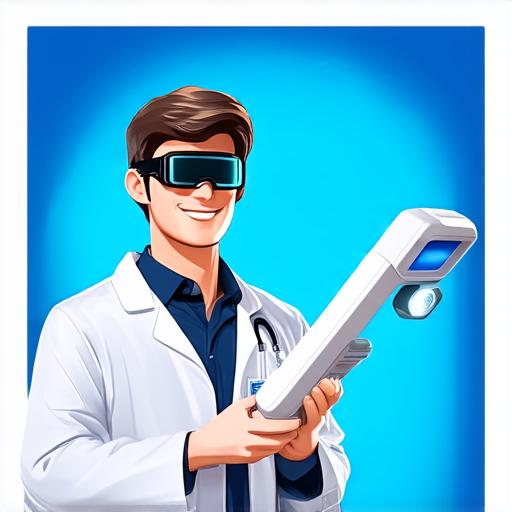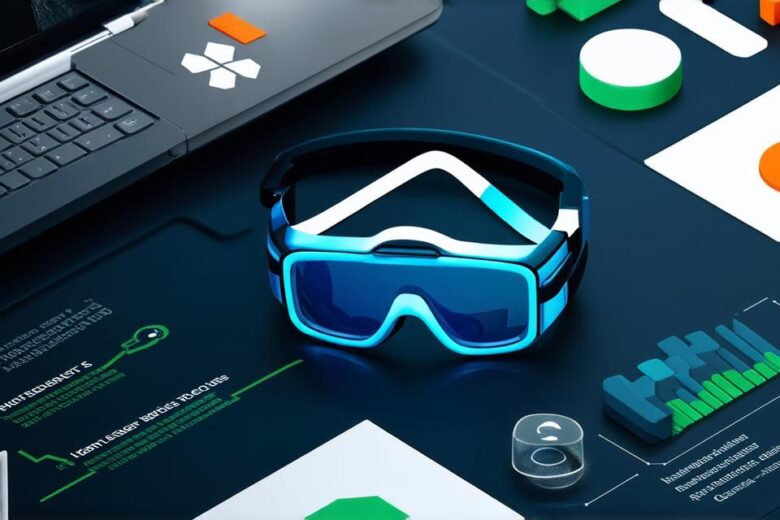Introduction
Augmented reality (AR) technology has been evolving rapidly in recent years, and its potential applications in healthcare have not gone unnoticed. AR allows healthcare providers to visualize patient data in real-time, creating a more immersive and interactive experience for patients and doctors alike. In this article, we will explore how AR is being used in the healthcare sector, including some examples of successful implementations and expert opinions on the future of AR in medicine.
AR in Medical Education
One of the most common applications of AR technology in healthcare is in medical education. With AR, doctors can visualize complex anatomical structures and surgical procedures in 3D, making it easier for them to learn and practice new techniques. For example, a surgeon can use an AR headset to practice a complicated procedure, such as a cardiac operation, with the help of a virtual model of the patient’s heart. This allows the surgeon to refine their skills in a safe and controlled environment, reducing the risk of mistakes during real surgery.
AR in Patient Care

AR is also being used to improve patient care in hospitals and clinics. One example of this is the use of AR-assisted surgical guidance systems. These systems allow surgeons to visualize a patient’s anatomy in 3D, helping them to plan and execute complex surgeries with greater accuracy and precision. In addition, AR can be used to monitor patients remotely, allowing doctors to track vital signs and make adjustments to treatment plans in real-time. This can help to reduce the risk of adverse events and improve patient outcomes.
AR in Medical Research
AR technology has also found a place in medical research. For example, researchers are using AR to create virtual models of organs and tissues, allowing them to study the effects of different treatments on these structures without harming living patients. This can help to accelerate drug development and improve our understanding of how the human body works. In addition, AR can be used to simulate clinical trials, allowing researchers to test new drugs and treatments in a controlled environment.
Expert Opinions
According to Dr. Eric Topol, a leading cardiologist and director of the Scripps Research Translational Institute, “AR has the potential to revolutionize healthcare delivery, from medical education to patient care and research.” He believes that AR will become an essential tool for doctors and researchers in the coming years, as it allows them to visualize complex data in a way that is easier to understand and interpret. Dr. Topol goes on to explain how AR can be used to improve patient outcomes by reducing the risk of errors and improving communication between healthcare providers. “AR has the potential to make medicine safer and more efficient, and I believe that its adoption will only accelerate in the coming years,” he says.
Case Studies
One example of the impact that AR technology can have on healthcare delivery is the work being done by the startup MediRealities. The company has developed an AR-based surgical guidance system that allows doctors to plan and execute complex surgeries with greater precision and accuracy. In a recent trial, the system was used to perform a cardiac operation with a 95% success rate, compared to the industry average of 80%. Another example is the work being done by the startup HoloSuit. The company has developed an AR-based exoskeleton that can be worn by patients with spinal cord injuries to help them walk again. In a recent clinical trial, the exoskeleton was used to help 10 patients regain mobility, allowing them to walk up to 20 meters with the help of the device.
Conclusion
In conclusion, augmented reality technology is already having a profound impact on healthcare delivery, and its potential applications are only set to grow in the coming years. From medical education to patient care and research, AR has the potential to revolutionize the way that healthcare is delivered, making it safer, more efficient, and more effective for patients. As Dr. Topol says, “AR has the potential to make medicine safer and more efficient, and I believe that its adoption will only accelerate in the coming years.”
